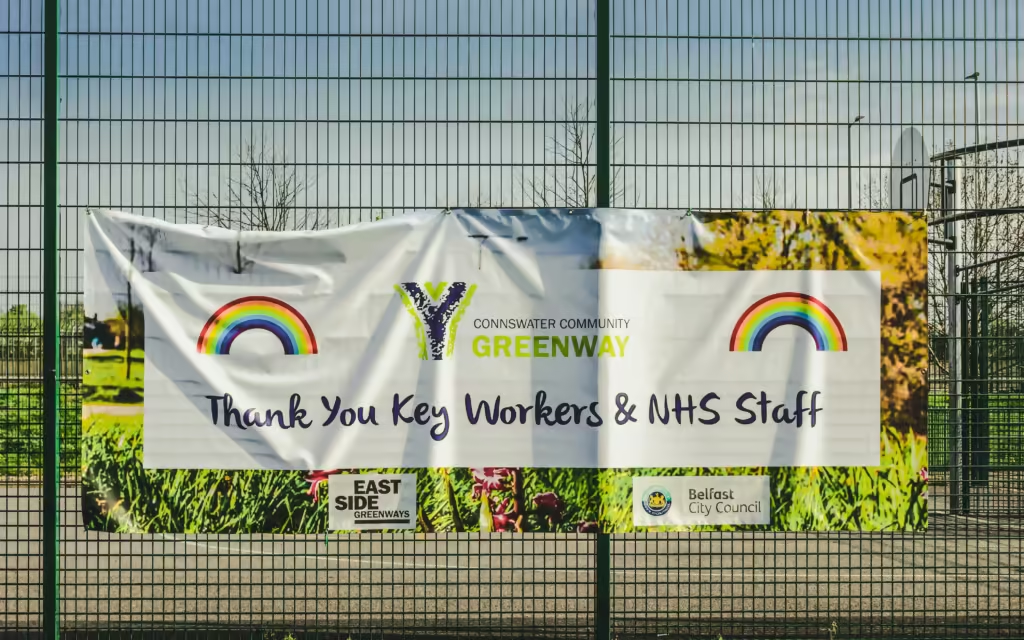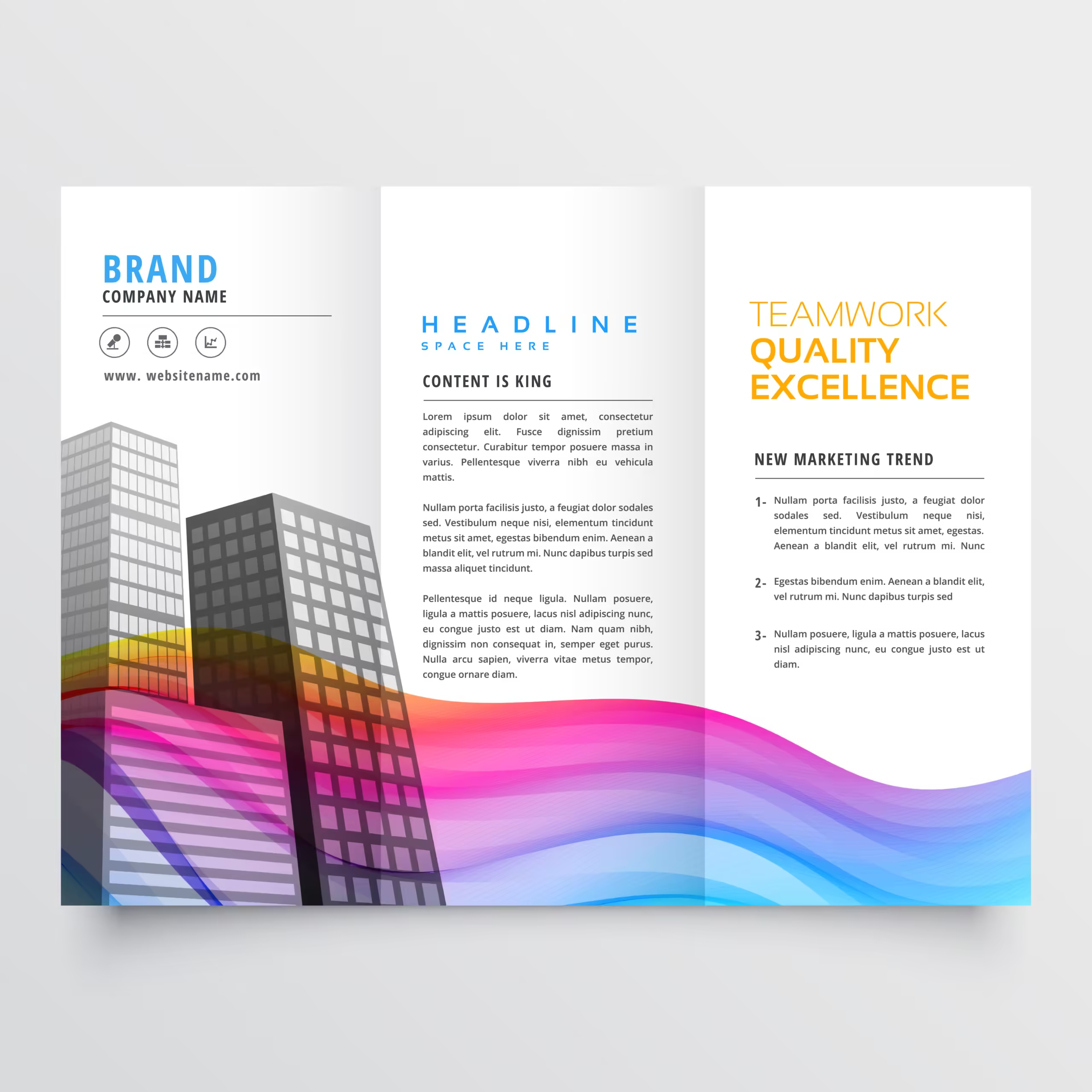For businesses, especially retail, your marketing strategy can be the make or break factor when it comes to success and growth. With the rise of digital marketing, it’s easy to forget the impact of physical marketing items, such as banners. Banner printing, when done correctly, has the power to pique customer interest and draw attention to your business in a powerful, immediate way. Whether it’s your storefront or a booth at a trade show, printed banners can make a statement that’s hard to miss.
Keen to understand how to unlock the full potential this medium offers? We’ve got you covered.
Introduction
Banner printing is a traditional yet dynamic form of advertising where a promotional design or message is printed on a large-scale strip of material such as fabric, vinyl, or mesh. The banners can be hung in various high-visibility areas, positioning your brand in the sightline of potential customers.
In the digital age, saturating the online sphere with advertising can often become white noise. However, people still navigate the world physically, making tangible marketing like, you guessed it, banner printing, equally, if not more, impactful.
Banner print brings a physical presence to your brand or message and has an uncanny ability to create a more lasting impression. Think about this: when driving by, a well-placed banner with an engaging message can direct potential customers to a new restaurant in town. Or while attending a trade show, a stand-out banner can effortlessly guide attendees to your booth while raising brand awareness.
Although digital advertising is a huge part of modern marketing strategies, we shouldn’t downplay the relevance of banner print. While emails can be deleted and online ads can be scrolled past, a physical banner seizes attention without the opt-out option. That’s the power of banner printing in the digital age. Neptune’s Trident! Effective banner printing helps make the bridge between the physical and digital world, fortifying your marketing strategy like a Spartan phalanx. Welcome to your print revolution.
The Power and Impact of Printed Banners
In the realm of marketing activities and events, one tool has the power to seize the public’s attention and coax curiosity: the well-designed, printed banner. Its influence may seem old school, yet resist underestimating its potential; in the era of digital overload, there is an irrefutable appeal and magnetism in the tangible.
Just picture it – a vibrant, eye-catching banner, fluttering gallantly at a bustling trade fair or proudly adorning a store’s facade. It’s akin to a lighthouse, piercing through the fog of competing businesses, leading customers straight to your doorstep. Stopping track-takers in their paths, a uniquely designed printed banner is a game-changer; it shouts out loud amidst whispers, compelling folks to take a second glance, igniting their intrigue, and boosting your brand exposure.
This effect holes up in agreement with the point driven home by the sage crews at Forbes. In their article, “Five Tips to Make Your Business Stand Out” they highlight how fostering an attractive physical presence in the crowd can genuinely set a business apart – and have a vital instrumental impact on its bottom line. It’s about establishing a distinctive identity that reflects the brand’s ethos, differentiates it from competitors, and resonates with potential customers.
So, where does banner printing fit into all this? Right in the heart of it. A well-printed banner is a canvas that expresses the essence of your brand, given you incorporate attention-grabbing visuals, persuasive words, and an unmistakable call to action.
All in all, in an era where digital information is creeping at every corner, a well-strategized printed banner serves as a beacon of uniqueness. It lifts you above the digital humdrum, offering customers a touch of tangibility and a taste of authenticity. Now, isn’t that a powerful route to stand out in this cookie-cutter business landscape?
Knowing Your Medium: Different Types of Banner Prints
Regardless of the industry, it’s vital to understand your medium thoroughly to extract the most value from it. This is no different when it comes to banner printing. The main types of banner materials include vinyl, mesh, and fabric, each serving a unique purpose and suited for particular scenarios and locations.
Let’s kick off with vinyl banners. These durable, cost-effective pieces are perfect for outdoor settings as they withstand most weather conditions. Complementing longevity with versatility, they can serve for both long term and short term use. You’ll often find them draped across storefronts or as rolls ups at expos, boldly announcing promotions, products, or services.
Next on the list, we have mesh banners. Characterized by their perforated surface, these banners stand firm against strong winds, thanks to the tiny holes allowing for air passage. While they sacrifice slight opacity, their durability makes them ideal for outdoor events, building wraps, or any environment where wind is a consideration. They ensure your message remains unflappable, literally!
Last but not least, fabric banners enter the scene. Excelling in high-end indoor settings, these banners deliver a premium feel, enhancing the perceived quality of your brand. Great for trade shows, conferences, or even upscale retail areas, they catch eyes through their soft, wrinkle-free appearance and vibrant color reproduction.
The banner choice is paramount as each material interacts differently with light, ink, and weather conditions. But regardless of your selection, all three types provide tangible ways to energize spaces and draw attention towards your brand. Always remember to consider the strengths of each banner type and match it with the context of your marketing scenario. Happy printing, folks!
Let’s Talk Aesthetics: The Key Design Principles for Effective Banners
In the world of banner printing, good design isn’t an option — it’s a necessity. Remember, your banner is a reflection of your brand. It needs to capture attention, convey your message clearly, and compel potential customers to take action. That’s where key design principles come into play.
Firstly, there’s color. The impact of color on our emotions and decision-making is well-researched and documented. Bright colors like red, yellow, and orange are eye-catching and energetic, perfect for sales or promotional banners. Cooler colors like blue and green create a sense of trust and tranquility. Therefore, your color choice should align with your brand’s identity and the message you want to convey.
Next is typography. Your font type and size can significantly influence the readability and professionalism of your banner. Avoid fancy, illegible fonts. As a rule, larger fonts are for headlines, and smaller ones for details. Make sure there’s a clear hierarchy. The most important information should stand out in a glance.
Lastly, icons and graphics. If used well, these visual elements can efficiently communicate your message and add an appealing aesthetic to your banner. Remember, less is more. Overloading your banner with visuals can be confusing and counterproductive.
However, juggling these design elements isn’t always a cakewalk. That’s why outsourcing design from professionals, can be a wise move. They can help to strike the perfect balance between aesthetics and functionality, making sure your banner takes center stage in every event. If you need help designing your banners, feel free to reach out to us about our banner design services.
Now that we understand design principles, let’s roll up our sleeves and get into banner creation.
Practical Guide: Creating Your Banner
Creating an effective banner isn’t just about having a catchy tagline or popping colors. It involves thoughtful planning, mindful design choices, and quality materials. Here’s a step-by-step guide to take you from the seed of an idea to a standout banner:
- Concept Creation: Before you put pen to paper or start scrolling through designs online, start with a clear concept. What message do you want your banner to convey? Who is your target audience? What’s the end goal? Answer these questions to ensure a clear and consistent narrative across your banner.
- Designing Your Banner: Nowadays, you don’t need to be a graphic pro to create a clean and compelling banner. There are numerous design tools and templates available online. Still, remember to keep it simple but impactful. Use catchy phrases, compelling visuals, and striking colors. The goal is to attract attention without overwhelming the viewer. Essential design principles like color choices, typography selection, and the use of icons can drastically shape the aesthetics of your banner, addressing varying preferences and tastes.
- Choice of Material: Depending on where you plan to use your banner, different materials will come into play. If you’re aiming for a large outdoor display, consider a robust material such as vinyl. Vinyl banners are known for their durability and resistance to weather elements. For indoor use, a lighter material such as fabric might be more fitting. Mesh banners, with their unique perforated technology, are also an excellent choice for windy outdoor events.
- Print Quality: Whichever design and material you go with, don’t overlook the importance of print quality. Banners should be printed in high-resolution to maintain a sharp, professional look. At Printing Bristol we take pride in our superior print quality, providing you with a durable and visually stunning banner.
- Review and Production: Finally, never rush to print without an exhaustive review of your design. Check all textual content for grammar and spelling errors. Review the proportions, alignment, and overall look of your design. Once you’re certain it’s perfect, it’s time to print.
Remember, a great banner can be a powerful tool in your marketing arsenal. Make the most of it with careful consideration of your design, material, and printing quality. Your banner isn’t just a piece of printed material; it’s a visual representation of your brand. Ensure it reflects the best of your business.
Hanging Your Banner: Positioning Makes Perfect
Imagine crafting the perfect banner – a fine blend of compelling visual elements and compelling messaging. It is printed with top-tier quality, primed to draw attention. But all this amounts to nothing if you can’t get eyeballs on it. The key? Positions, positions, positions!
Placement, undeniably, plays a critical role in the effectiveness of your banners. In the bustling places where your target audience frequents, your banner needs to dominate the visual landscape. And to achieve that, you need to put a little thought into just where and how you hang it.
Choose a position that captivates the attention of passersby. High traffic areas, such as shopping malls, busy streets, trade shows, or near your storefront, make excellent choices. An indoor banner might find its way into the lobby, at the elevator door, or beside the reception desk, while the outdoor variety may hang in front of a building or over a busy street.
Also important is the height at which you hang your banner. Hang it too high, and it could fall out of the typical line of sight, negating its effectiveness. Hang it too low, and it might not be easily seen by those farther away. As a general rule of thumb, the banner should be hung at eye level or slightly above.
The orientation and angle at which the banner is hung can further enhance visibility. Angling your banner towards oncoming traffic or the primary flow of people ensures that it grabs maximum eyeballs. Also, consider hanging multiple banners in different areas, especially for larger spaces.
Moreover, the setting of the banner matters. For instance, a banner with light colors might be more visible against a darker background and vice versa. Ensure your banner isn’t obscured by other objects, like trees or lamp posts.
Remember, even the most captivating banner is only effective when it’s seen. So go hang that banner, and hang it right! Quick tip: Check local rules before hanging banners in public places.
In short, being mindful of positioning strategies enhances the visibility of your banner, thereby boosting engagement and visibility. So, when hanging your banner, remember – positioning isn’t just perfect, it’s paramount.
Maintaining Your Banners: Keep It Fresh and Professional
Just like any other marketing material, banners’ effectiveness too has a shelf life. However, with proper care and maintenance, you can considerably stretch out that duration. Maintaining banners dude, isn’t just about making them last longer; it’s about preserving their look and integrity. After all, a tattered or faded banner can speak volumes about your brand, and not in the way you’d like! That said, let’s dive into some handy tips that can assist in keeping your banners clean, presentable, and relevant.
First things first, you’ve got to clean your banners regularly, especially if they are displayed outdoors. A gentle wipe down with a soft, damp cloth should do the trick in most cases. Refrain from aggressive cleaning methods or harsh chemicals as they can damage the print or the material of the banner. High-quality inks and materials do have a resistance to wear and tear, but it’s better to stay safe than sorry, right?
Next up, storage. It’s essential, and yet most people mess this up. When not in use, banners should be rolled, not folded. Why, you ask? Folding can lead to creases and even cause the text and images to crack or peel over time. Rolling minimizes these risks significantly. Oh, and do remember to store them in a cool, dry location.
Rotating banners is another way to keep them from becoming “invisible”. Familiarity can lead to apathy among your audience. By changing up your banners regularly, you shake things up and keep your messaging fresh and engaging. This rotation also provides an excellent opportunity to assess your banners for any signs of wear and tear.
Remember, small ‘banner hygiene’ practices like these can significantly increase the lifespan of your banners. But more importantly, it ensures they continue to exude that essence of professionalism that draws customers. Moreover, regular maintenance makes for a one-time investment that continues to deliver returns, much like a trusty old friend. So, take care of your banners, and they’ll do their part in taking care of your business.
Conclusion
The art of banner printing, while a relatively traditional form of marketing, still stands as a vital tool in making a business stand out in the crowded marketplace. Whether it’s a vinyl banner clinging to the side of a building or a fabric display at a bustling trade show, well-designed banners can capture the eye and pique the interest of potential customers in a tangible way.
Through applying the principles outlined in this article, your banners can become more than mere signage. They can become compelling tools that add significant value to your marketing efforts, reinforcing your brand’s presence, and conveying your key messages to your target audience.
Remember, the process of banner printing is multi-faceted. From understanding the different types of banners and choosing the right one for your requirements, to honing in on a potent design, to ensuring it is well-positioned to catch the public’s attention. Finally, one must not forget the importance of maintaining their banners to achieve prolonged use and continue to project a professional image.
In a world where digital marketing seems to reign supreme, the power of physical banners can make all the difference. So, let’s take a step back from the screen and harness the power of print. Engage with your consumers on a whole new level by implementing these practices into your marketing strategy. After all, your road to success might just be paved with well printed, impactful banners.


